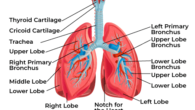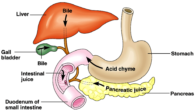
Important 10 Crucial Facts About Medical School: Your Path to a Rewarding Healthcare Career
Medical School: Shaping the Future of Healthcare
Introduction
Medical school is a critical step on the journey to becoming a doctor or other healthcare professional. It provides rigorous training, hands-on experience, and the knowledge necessary to tackle the complexities of modern medicine. This guide dives into the journey of medical education, its challenges, significance, and the impact it has on society.
What Is Medical School?
Medical school is an educational institution where students undergo professional training to practice medicine. It involves years of coursework, clinical rotations, and assessments that culminate in a medical degree. Graduates often specialize further through residency and fellowships. The rigorous curriculum equips students with not only theoretical knowledge but also practical skills essential for patient care.
The Journey Through Medical School
- Pre-Medical Phase: Students must complete undergraduate studies with a focus on prerequisites such as biology, chemistry, and physics. These foundational subjects lay the groundwork for advanced medical concepts.
- Application Process: This competitive stage includes submitting transcripts, recommendation letters, personal statements, and often, achieving a high score on the Medical College Admission Test (MCAT). Applicants also need to showcase leadership, volunteer work, and a genuine passion for medicine.
- Years 1-2: Foundational Learning: These years focus on classroom-based learning, covering subjects such as anatomy, pharmacology, pathology, and medical ethics. Students also engage in simulations and lab work to complement theoretical knowledge.
- Years 3-4: Clinical Rotations: Students gain hands-on experience in hospitals and clinics, working in various specialties like pediatrics, surgery, and internal medicine. These rotations allow students to explore potential fields of interest and apply their knowledge in real-world settings.
- Residency Matching: After graduation, students match into residency programs to specialize in their chosen fields. The residency period provides intense training under supervision and often spans 3-7 years depending on the specialty.
Challenges of Medical School
- Demanding Workload: Medical school is intensive, requiring mastery of vast amounts of information in a limited time.
- Financial Burden: Tuition fees can be high, leading many students to accumulate significant debt. Scholarships, grants, and financial aid help alleviate some of these costs, but the burden remains a challenge for many.
- Emotional Strain: Balancing academic, clinical, and personal responsibilities can be overwhelming. The emotional toll of dealing with life-and-death scenarios also affects many students.
- High Standards: Consistently meeting high academic and professional standards demands resilience and self-discipline.
Significance of Medical School
- Producing Skilled Practitioners: Medical schools train future doctors, equipping them with the skills to diagnose, treat, and prevent diseases. This training ensures the quality and reliability of healthcare systems.
- Advancing Medical Knowledge: These institutions often lead groundbreaking research in healthcare, driving innovations in treatment and technology.
- Improving Public Health: By educating compassionate and competent professionals, medical schools enhance healthcare systems globally. Graduates often engage in public health initiatives and policies that impact millions.
- Fostering Innovation: Students are encouraged to think critically, challenge norms, and contribute to medical advancements, ensuring continued progress in the field.
FAQs About Medical School
1. How long does it take to become a doctor?
Including undergraduate studies, medical school, and residency, it typically takes 10-15 years. Some specialties, such as neurosurgery, may require even more extensive training.
2. What are the costs associated with medical school?
Costs vary by country and institution but can range from $200,000 to over $400,000 in some cases. Financial planning is essential to navigate these expenses effectively.
3. Can you work during medical school?
Due to its rigorous nature, most students find it challenging to work during medical school. However, some take on part-time roles, such as tutoring, during less demanding periods.
4. What is the pass rate for medical students?
Pass rates for licensing exams are generally high, as students must meet stringent admission criteria and maintain a strong academic performance throughout their training.
5. What qualities make a successful medical student?
Dedication, resilience, empathy, and strong problem-solving skills are essential. Successful students are also adept at time management and stress coping strategies.
Tips for Aspiring Medical Students
- Begin early preparation by excelling in sciences during high school.
- Gain relevant experience through volunteering or internships in healthcare settings.
- Develop time management and resilience strategies to handle the demanding nature of medical training.
- Build a strong support network of mentors, family, and peers to stay motivated.
- Research potential medical schools thoroughly to align with your goals and interests.
The Role of Medical School in Society
Medical schools are pillars of healthcare systems. They educate professionals who address global health challenges, lead public health initiatives, and innovate in treatments and technologies. These institutions foster a culture of service and lifelong learning, ensuring better healthcare access and quality for all.
Additionally, medical schools play a crucial role in addressing healthcare disparities by training culturally competent doctors who understand diverse populations’ needs. This approach promotes equity in healthcare delivery and outcomes.
A Wish for Future Doctors
Medical school is not just about earning a degree but about embracing a lifetime of learning and service. Aspiring medical professionals should remain passionate and committed to the well-being of others, contributing to a healthier and brighter future. The path may be challenging, but the rewards of making a difference in countless lives are immeasurable.









Leave a Reply